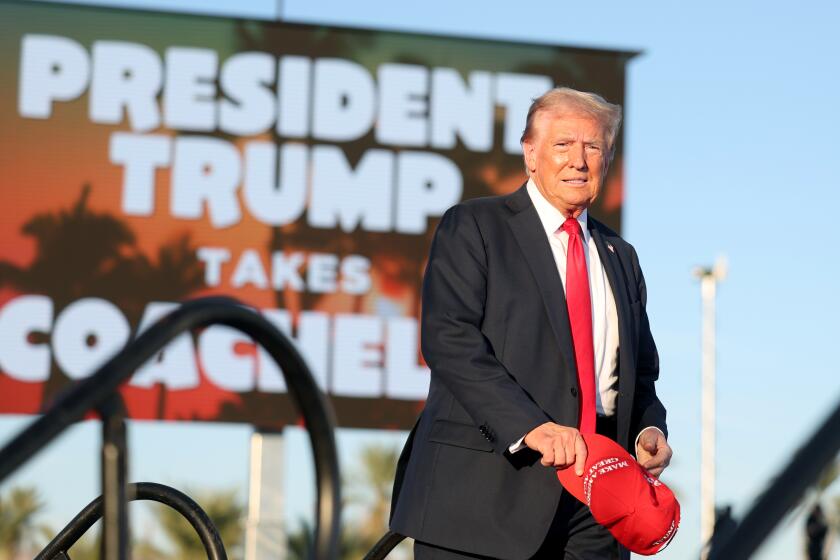Issues, Candidates Swell Voter Turnout
A presidential campaign enlivened by hot-button local issues such as the proposed El Toro airport drove Orange County voters to the polls Tuesday, with turnout the best in years: 42.4% as of 7 p.m., the Registrar’s office reported Tuesday.
From the moment polling locations opened at 7 a.m., voters, with newspapers and election guides rolled in their hands, lined up throughout the county to cast ballots. At some stations, lines formed even during traditionally off-peak hours such as 10 and 11 a.m.
“I’ve never seen them come continuously like this, never” said Patricia Bradley, a precinct officer in Corona del Mar who has served in five elections. “It’s these issues,” she said, looking up at passing jets from John Wayne Airport. “I think the (El Toro) airport really has people interested.”
Registrar of Voters Rosalyn Lever reported that Orange County voters were going to the polls in unusually high numbers: By 3 p.m. turnout was nearly 22%, well above a 17% turnout recorded at that hour in the 1998 primary. Phone lines to Lever’s office were busy much of the day with people looking for polling stations and asking about absentee ballots.
The ballot listed 20 state measures dealing with everything from gaming on Indian lands to the definition of marriage.
“It’s certainly above average for a primary election,” Lever said.
Experts and observers pointed to several explanations. Some said moving the California primary from June to March this year added excitement by giving Californians more clout in national contests.
“We’ve had a series of primaries that were irrelevant because of their timing,” said Mark Petracca, chairman of the political science department at UC Irvine.
While it is still too soon to predict a reversal of a decades-long downward trend in turnout, the primary was early enough in the political season to significantly affect party nominations, Petracca said.
“It’s exciting, it’s consequential,” he said. “Competition usually brings people to the polls.”
Many voters cited high-profile races and ballot measures.
The hottest was Measure F, placed on the ballot by South County communities trying to block plans to convert the retired El Toro Marine Corps Air Station into an international airport.
The measure brought voters to polls, but it also confused them. The measure was not simply a vote on the airport plan; voting for F meant voting to require two-thirds voter approval for a range of projects--including airports, hazardous waste landfills and large jails near homes. Passage would require county supervisors to place a fourth El Toro airport measure before voters and could halt county plans to expand the James A. Musick branch jail in Lake Forest without a public vote.
Aundrea Benfield, 39, an Orange homemaker, said the only reason she voted Tuesday afternoon was to oppose an El Toro airport, even though she lives far away.
“I don’t think it would be good for the community. . . . The traffic would be terrible. We just don’t need an airport.”
Ultimately, though, despite those strong feelings, she was so confused by the measure’s language she isn’t certain whether the vote she cast was for or against the airport. “I couldn’t find the airport on the ballot,” she said.
Other voters cited two measures that drew them out: Proposition 1A, a state initiative on Indian gaming, and Proposition 22, which prohibits the state from recognizing any marriages except those between a man and a woman.
Mike Hunter, 52, a retired Orange voter, was motivated by Proposition 22.
Hunter said he fears gay marriage would set a bad example for children. “Marriage should not be taken that far,” he said.
*
Staff writers Peter M. Warren and David Haldane contributed to this report.
More to Read
Get the L.A. Times Politics newsletter
Deeply reported insights into legislation, politics and policy from Sacramento, Washington and beyond. In your inbox three times per week.
You may occasionally receive promotional content from the Los Angeles Times.










